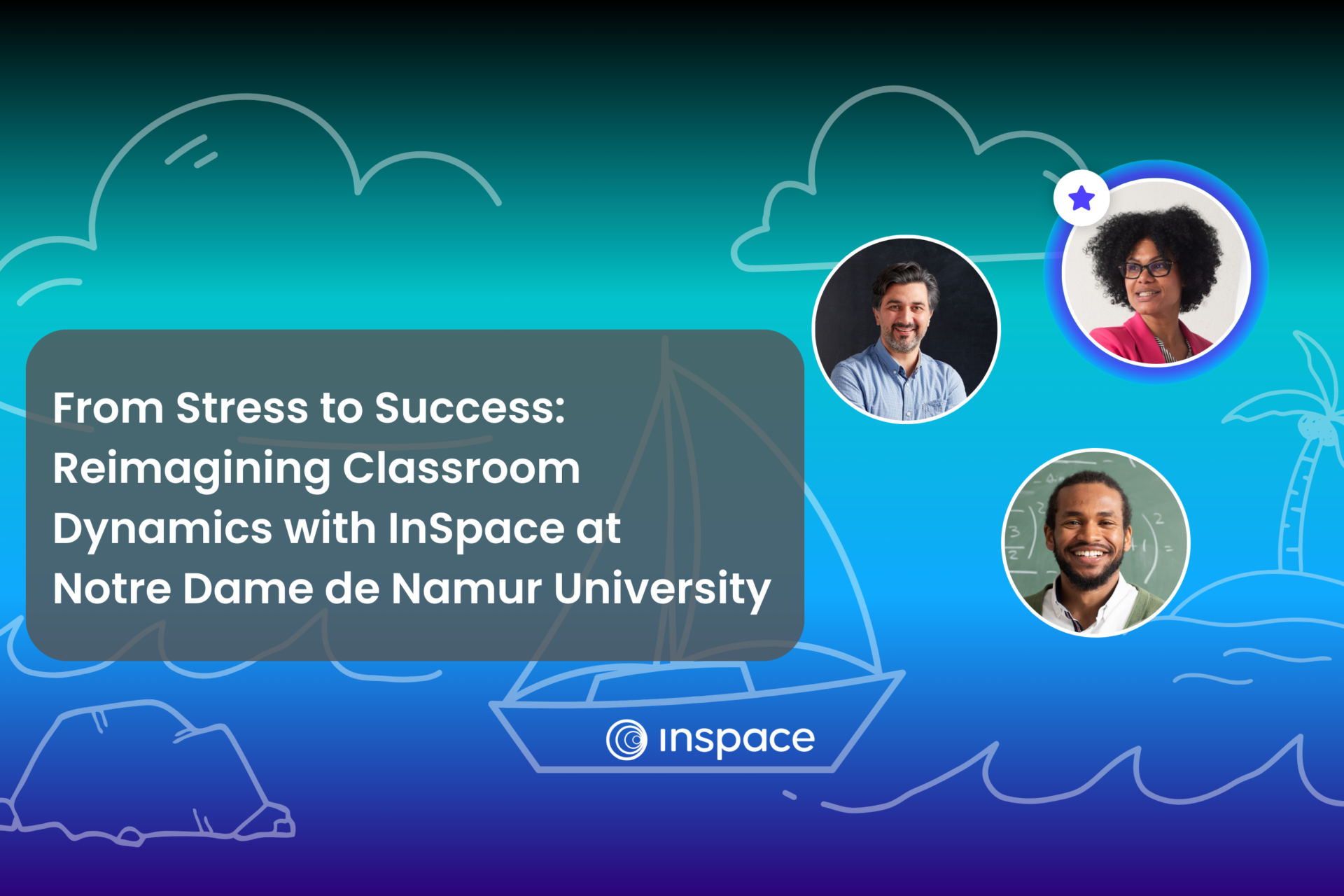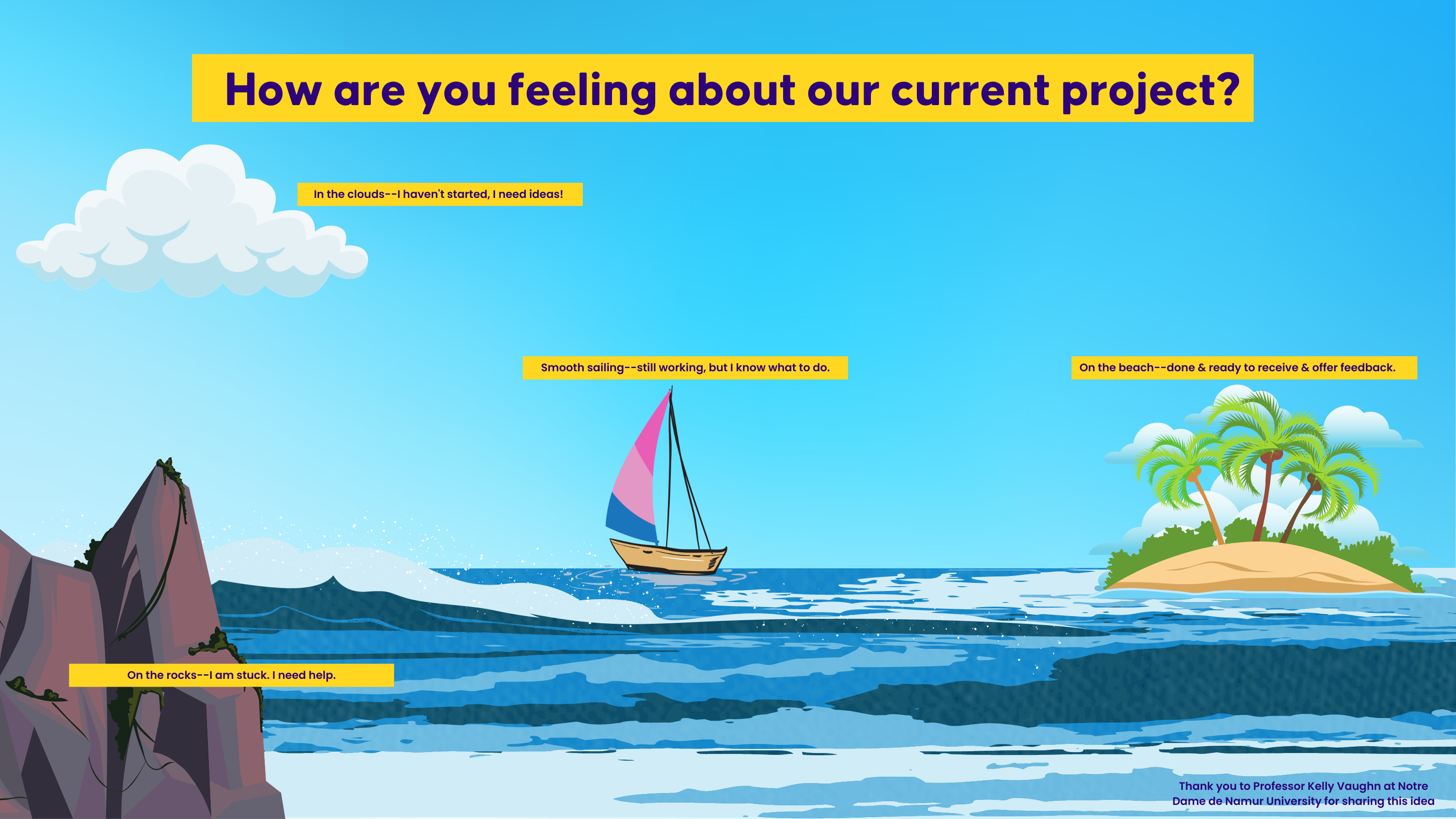
From Stress to Success: Reimagining Classroom Dynamics with InSpace at Notre Dame de Namur University
The Problem
Notre Dame de Namur professor Kelly Vaughn knew something had to change in her CalTPA course. The rigorous teacher preparation course supports students in completing their California Teacher Preparation Assessment cycles and fieldwork and is an essential component of the educator licensing process. Vaughn found that students completing the requirements were overstressed and unsure about how to seek support, especially during the weekly live class sessions. This resulted in high feelings of overwhelm and burnout among students trying to navigate rigorous state standards and new technology.
Reframing virtual class participation
Vaughn began using InSpace in January 2021 to support conversations with students and move her virtual classes away from presentation-driven online delivery toward the research-backed collaborative sessions she favored in brick-and-mortar classrooms. After introducing InSpace to students, she found they quickly learned the Space controls and began connecting differently during live sessions.
As students grew more comfortable with InSpace, Vaughn saw a shift. Students began actively participating in the classroom, asking driving questions and engaging with the material more profoundly. The sense of isolation dissipated, replaced by shared learning and collaboration.

Intentional routines for collaboration and discussion
Building on this initial success in fostering a collaborative classroom atmosphere, Vaughn intentionally built routines to support student discussion and collaboration that became regular classroom fixtures: “I do try to do a familiar routine for each class session… Think pair share time, where they will have individual and then group virtual tables. And then at the end, we change it to a presentation room where everyone takes a virtual seat, and then I share on the screen the students’ work where they can talk about each other’s work in their partners and reflections on that.”
One routine resonated strongly with her graduate students, all teacher candidates enrolled in their final semester seminar. During this time, students prepare for their California licensing portfolio exams. Says Vaughn, “It’s a pretty critical class for all of the student teachers in my class. When people are feeling stressed, it allows me to use these kinds of activities that go into building bridges with InSpace.”
Responding to the high stress levels, Vaughn created a custom background for her classroom space with dedicated gathering places for students at different levels of confidence with their projects. She prompted students to move to a spot on the backdrop that resonated with their thinking or feeling at the time. Students spent time talking in small groups with the proximity audio on, then shared as a whole group. This became a weekly check-in and grounding point for the group.
Impact on the virtual learning environment
Vaughn found that “It changed the tone of class. I did this at the beginning of class […] This allows for more social-emotional connections to share how they are feeling. I listen to them, I hear them out, and I affirm them, and with that, it lets everyone’s guard down. Then we proceed with the how-tos.” This was a small change in the virtual environment, but it significantly improved the learning experience. By taking time out to focus on student experiences and motivations in class, Vaughn could more deeply connect with her students and facilitate more meaningful student-to-student connections.
For students, the opportunity to connect with their experiences as a group and see their peers working at different stages felt empowering and opened opportunities to talk with and learn from them. A common theme of these peer conversations was, “How did you get from where I am to where you are?” indicating a strong student desire to learn from their peers’ experiences. After completing the check-in exercise, one student shared feedback with the professor: “The InSpace way of teaching is very interesting […] I realized it is very fun and interactive. I feel like I am ‘in the clouds.’ […] The backgrounds are so welcoming and I felt that I was in another world. I really see this in the near future to apply it in the classroom.”
Vaughn also saw a change in her more anxious students. She noted they were more at ease and willing to approach her if they had questions. Previously, many students would stay silent about their challenges, and she wouldn’t know until they failed tasks or submitted work late. Other students were very vocal about their challenges and having this outlet tempered that vocality to create space for others in class to participate. Throughout, students could talk to each other, de-centering the instructor and centering the student journey through the course.
Vaughn says this practice “allows us to have a foundation of connection. We’ve met each other where we are and can move on to the next phase” of collaboration.
Watch the video in a new tab: InSpace + Notre Dame de Namur University
Reflection questions:
- What is the value you provide to students who join your synchronous spaces? When students enter your space, what should they expect to get out of the experience?
- Keep in mind that community is an outcome, not a goal. People join communal spaces due to internal, intrinsic motivations like the desire to learn from others and the need to be creative and be challenged.
- How can you construct frameworks and pillars that support your community’s creative work? Like Vaughn’s custom backdrop, think about the directional nudges you can make to support collaboration or creative productivity without being prescriptive.
- How can you create opportunities for co-creation, trust, and community ownership of tasks in your synchronous sessions? How can you let go of mistrust for other ways of working and create opportunities for participants to work differently in your Space?
Try it for yourself:
Learn more about the features leveraged by Professor Vaughn to create a collaborative check-in routine that broke down communication barriers and increased the sense of classroom community.
- Proximity audio
- Interactive polls using custom backgrounds and proximity audio
- Custom backgrounds
- Breakout rooms
- Collaborative Google Drive resources and interactive Miro Boards
Download Vaughn’s custom background by clicking here and use it in your own sessions – or customize it to fit your needs!